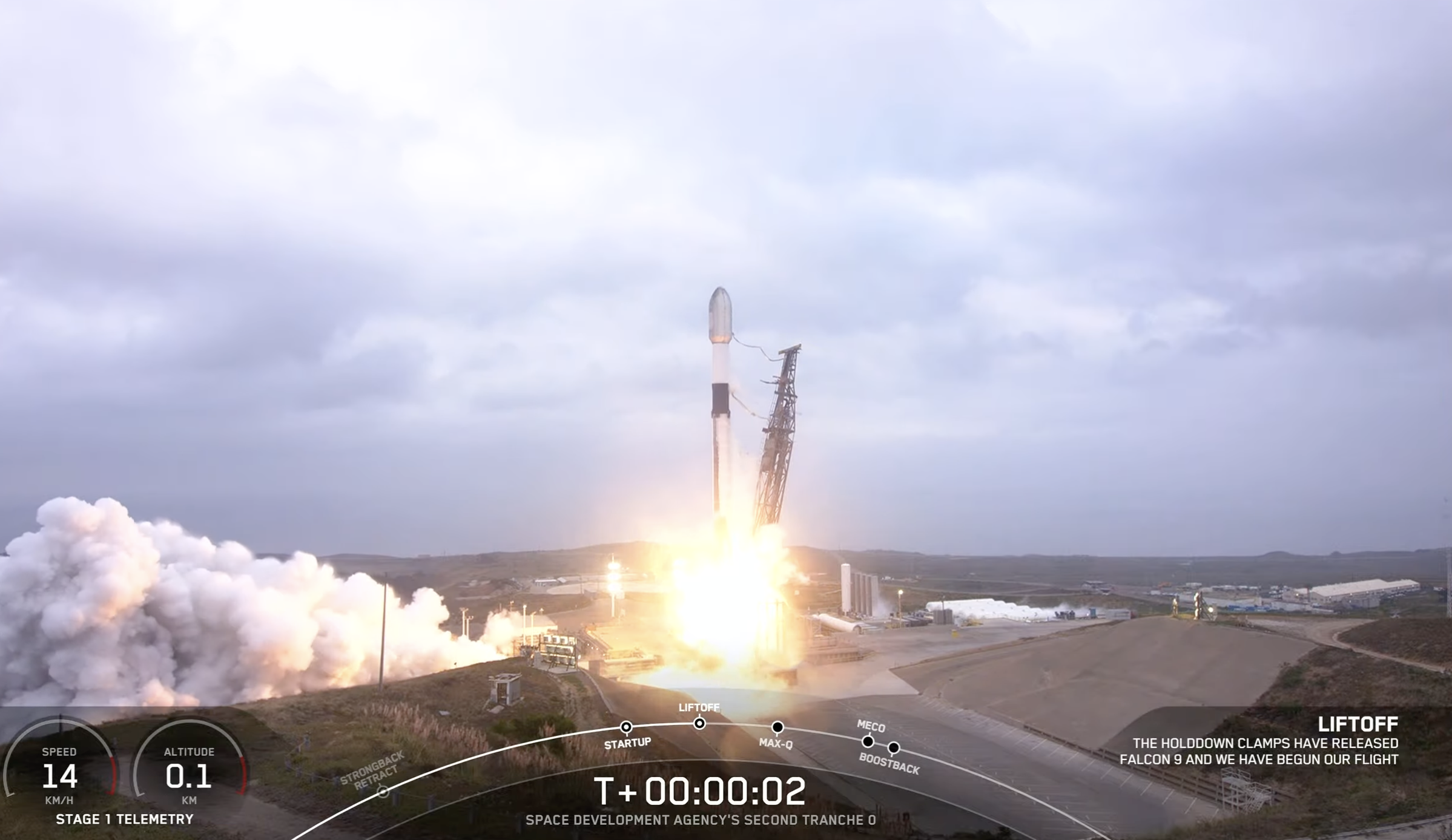WASHINGTON — A SpaceX Falcon 9 rocket lifted off Sept. 2 at 7:25 a.m. Pacific from Launch Complex 4 East at Vandenberg Space Force Base, California, carrying 13 U.S. military satellites.
The mission to low Earth orbit was the second launch of the Space Development Agency’s Tranche 0 mesh network of military communications and missile tracking satellites. The first 10 satellites of Tranche 0 launched April 2.
SDA is a U.S. Space Force organization building a space data network — called the Proliferated Warfighter Space Architecture — that includes a transport layer and a missile-tracking sensor layer. The agency aims to deploy an internet in space that can move data from satellite to satellite, and pass information to military systems on the ground, at sea and in flight.
This was SpaceX’s third attempt to launch the Tranche 0 mission. The launch had been scheduled for Aug. 31 but was called off during the pre-launch countdown due to a first-stage engine issue on the Falcon 9. A second attempt Sept. 1 was scrubbed minutes before the scheduled liftoff when a problem was discovered with a valve on the ground support equipment that needed additional troubleshooting.

After separating from the second stage about two and a half minutes into the flight, the booster performed three engine burns and returned to Landing Zone 4 at Vandenberg about eight minutes after liftoff. As is customary with military launches, SpaceX did not provide views of the second stage or payload updates after booster separation.
The 13 spacecraft of the Tranche 0 constellation launched on Saturday included 11 communications satellites — 10 made by Lockheed Martin and one made by York Space — and two missile-tracking sensor satellites made by SpaceX.
There are four more Tranche 0 missile-tracking satellites made by L3Harris that are projected to launch on a U.S. Space Force-Missile Defense Agency mission later this year, to be flown also on a Falcon 9 under the National Security Space Launch Phase 2 contract.
The April 2 and Sept. 2 Tranche 0 launches were performed under a December 2020 $150 million contract SDA awarded to SpaceX.
This was SpaceX’s 61st launch so far this year and 260th overall. The first-stage booster for this mission completed its 13th flight. SpaceX to date has recovered 222 first stages.
